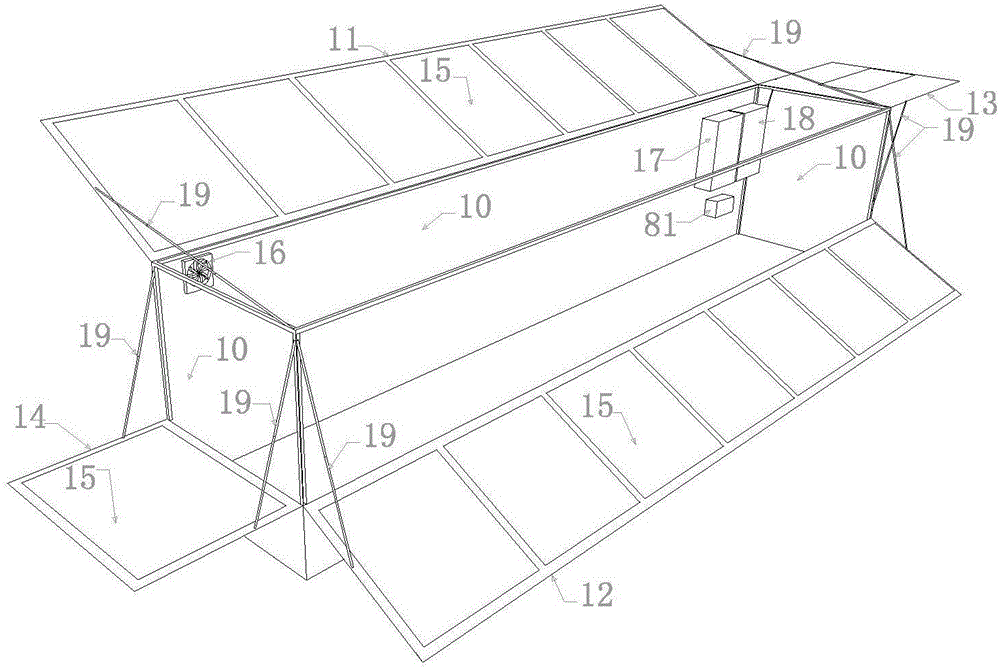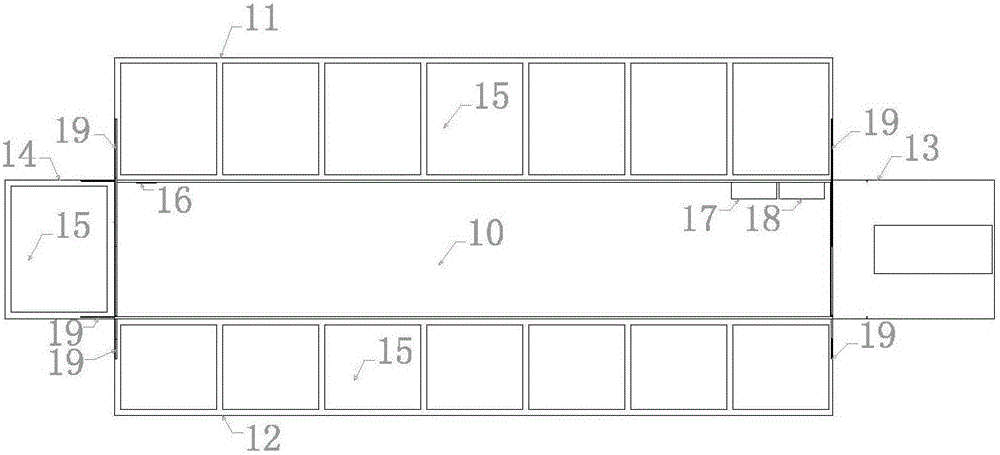Fish and vegetable co-existing photovoltaic container system
A fish and vegetable symbiosis and container technology, applied in the field of breeding systems, can solve the problems of low decomposition efficiency of organic pollutants, high construction difficulty, high construction cost, etc., and achieve the effect of adding ultraviolet sterilization and disinfection links, convenient and quick operation, and saving construction costs
- Summary
- Abstract
- Description
- Claims
- Application Information
AI Technical Summary
Problems solved by technology
Method used
Image
Examples
Embodiment 1
[0053] Embodiment 1: as Figure 1-Figure 9 As shown, the aquaponics symbiosis photovoltaic container system described in the present invention uses a 40-foot container for modular production, and the top panel, front panel, and side wall panels of the container are all replaced with a flap structure hinged on one side, and the top flap 11. The front flap 12, the side wall flap 14 and the front door flap 13 are all connected to the container frame through the power mechanism. The inner side of the wall flap 14 is equipped with photovoltaic cells 15. Under ideal lighting conditions, the control box 18 controls the hydraulic cylinder to drive the three flaps to open to a suitable angle. The top flap 11, the front flap 12, The side wall turnover plate 14 is inlaid with the sun board 10 on the corresponding frame, which is used for light transmission, heat preservation, night, rainy, cold and other situations. Front door turnover plate 13 has no sunshine board, and this turnover p...
PUM
 Login to View More
Login to View More Abstract
Description
Claims
Application Information
 Login to View More
Login to View More - R&D
- Intellectual Property
- Life Sciences
- Materials
- Tech Scout
- Unparalleled Data Quality
- Higher Quality Content
- 60% Fewer Hallucinations
Browse by: Latest US Patents, China's latest patents, Technical Efficacy Thesaurus, Application Domain, Technology Topic, Popular Technical Reports.
© 2025 PatSnap. All rights reserved.Legal|Privacy policy|Modern Slavery Act Transparency Statement|Sitemap|About US| Contact US: help@patsnap.com



